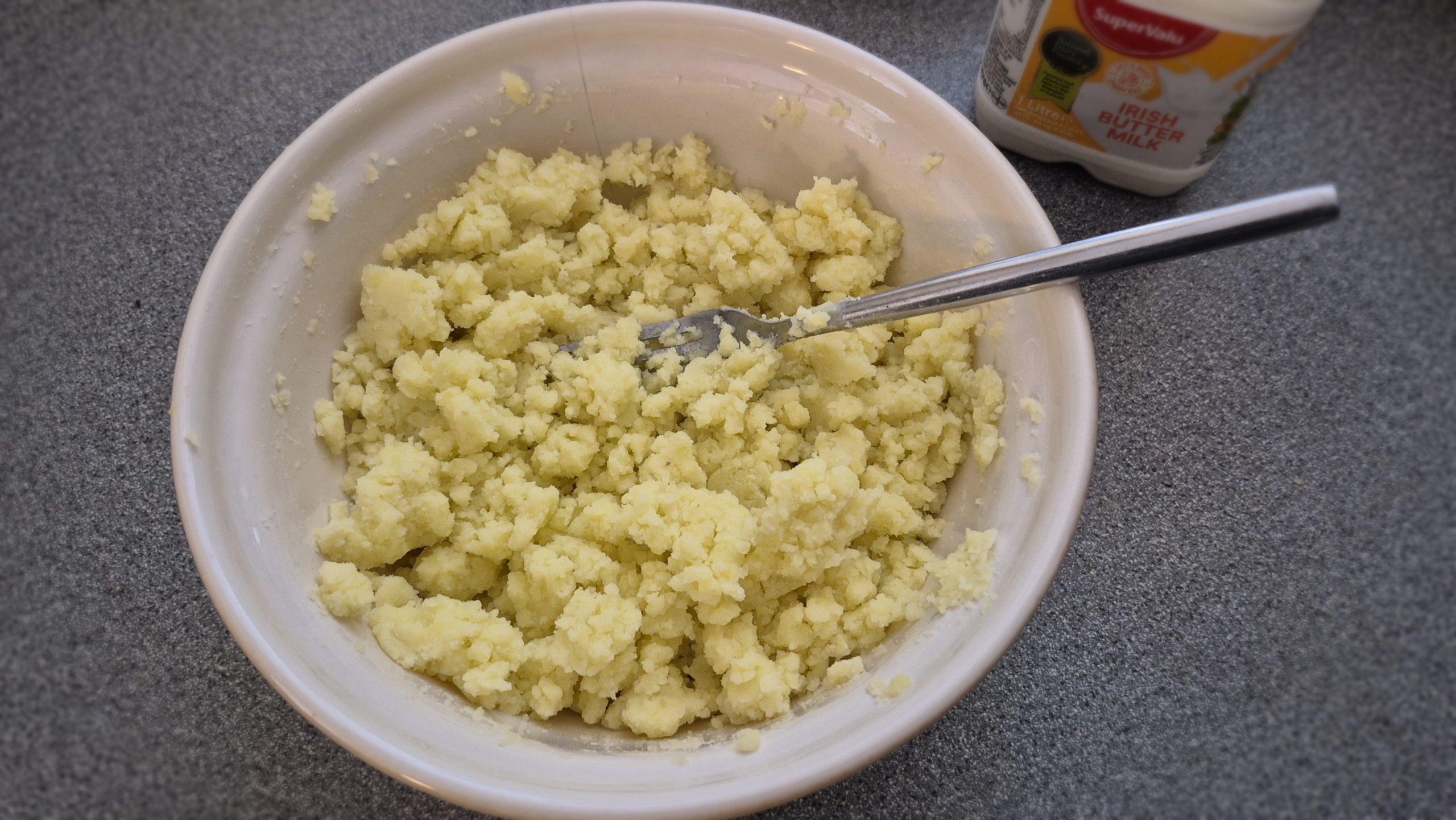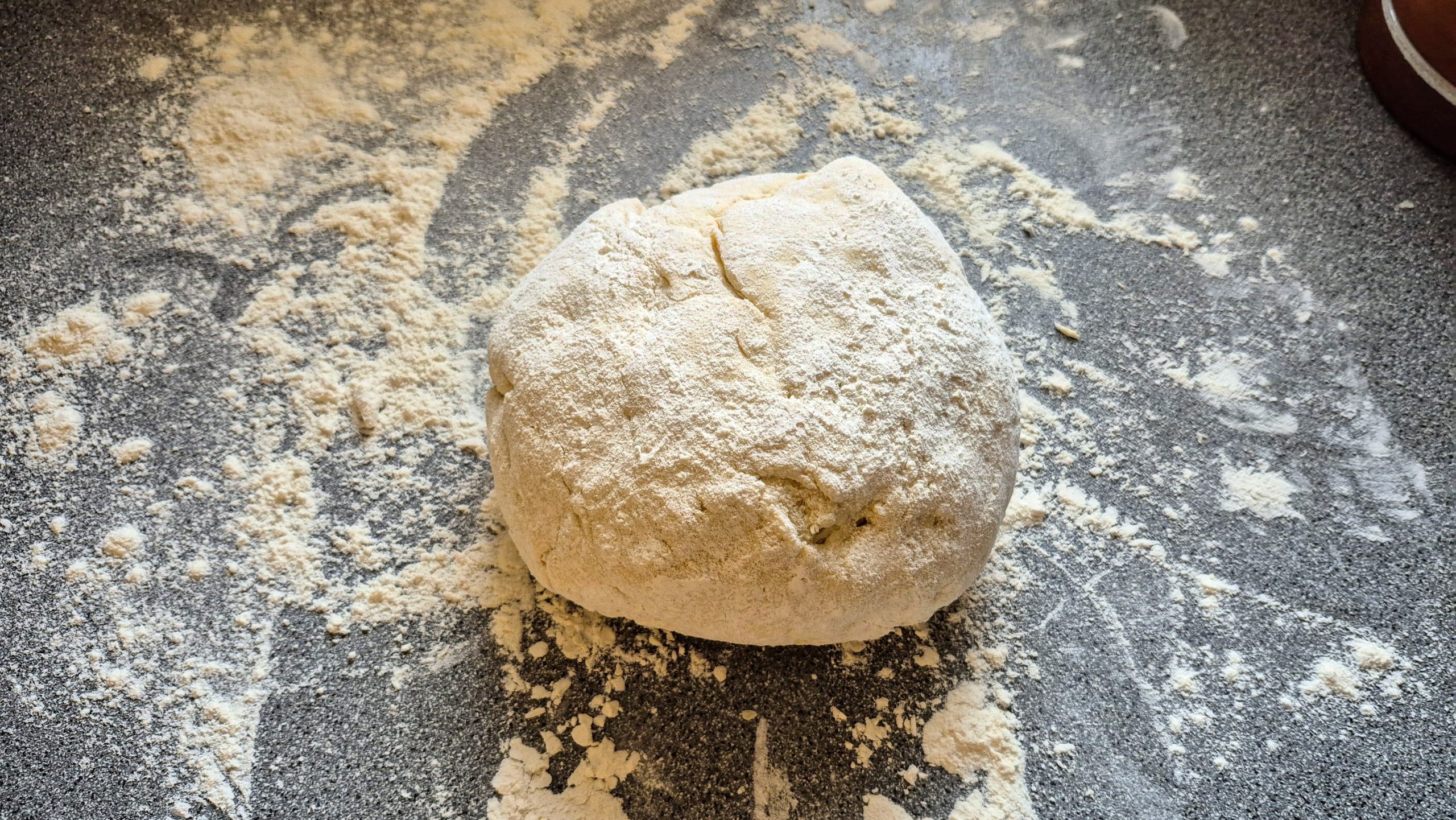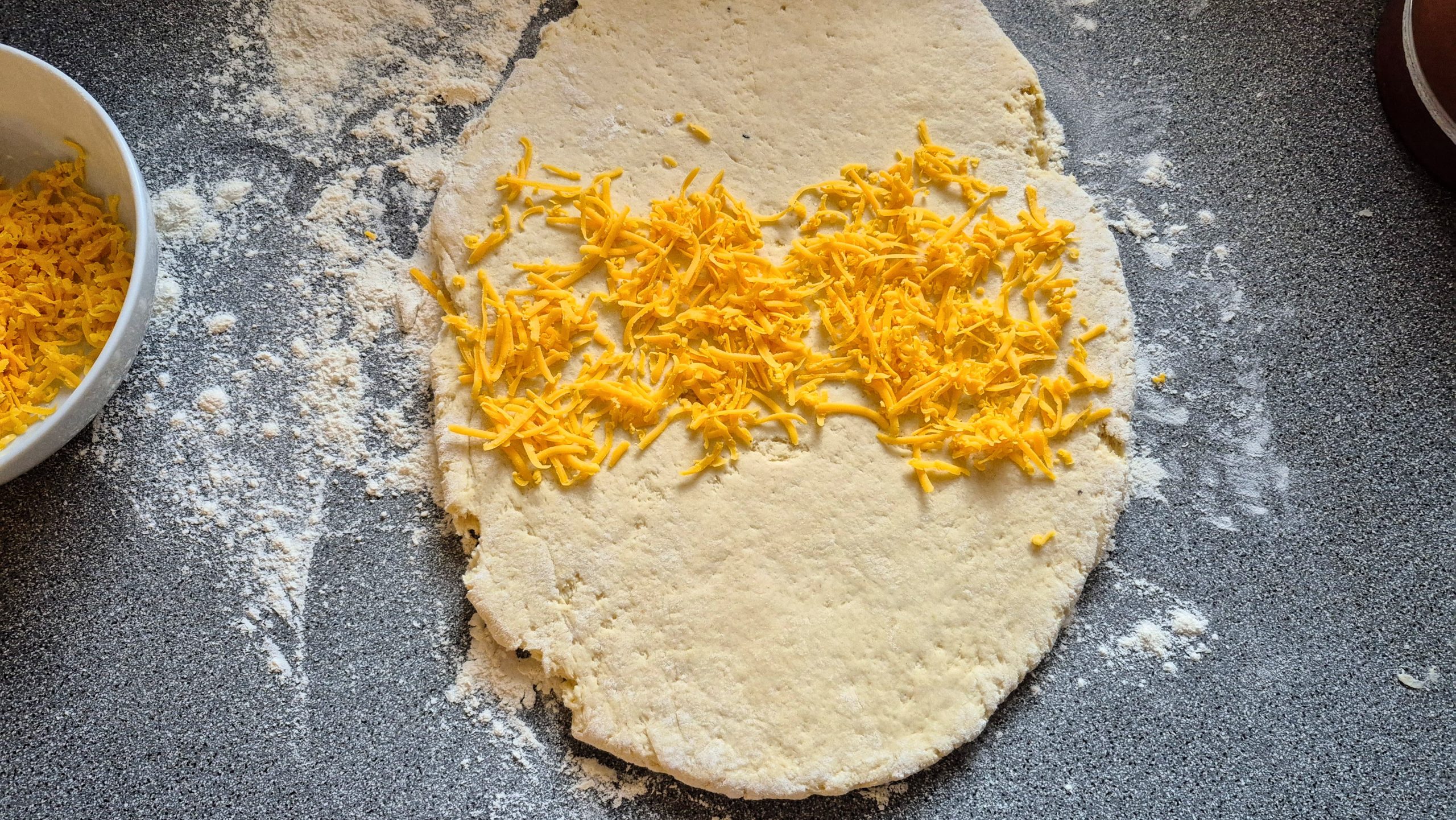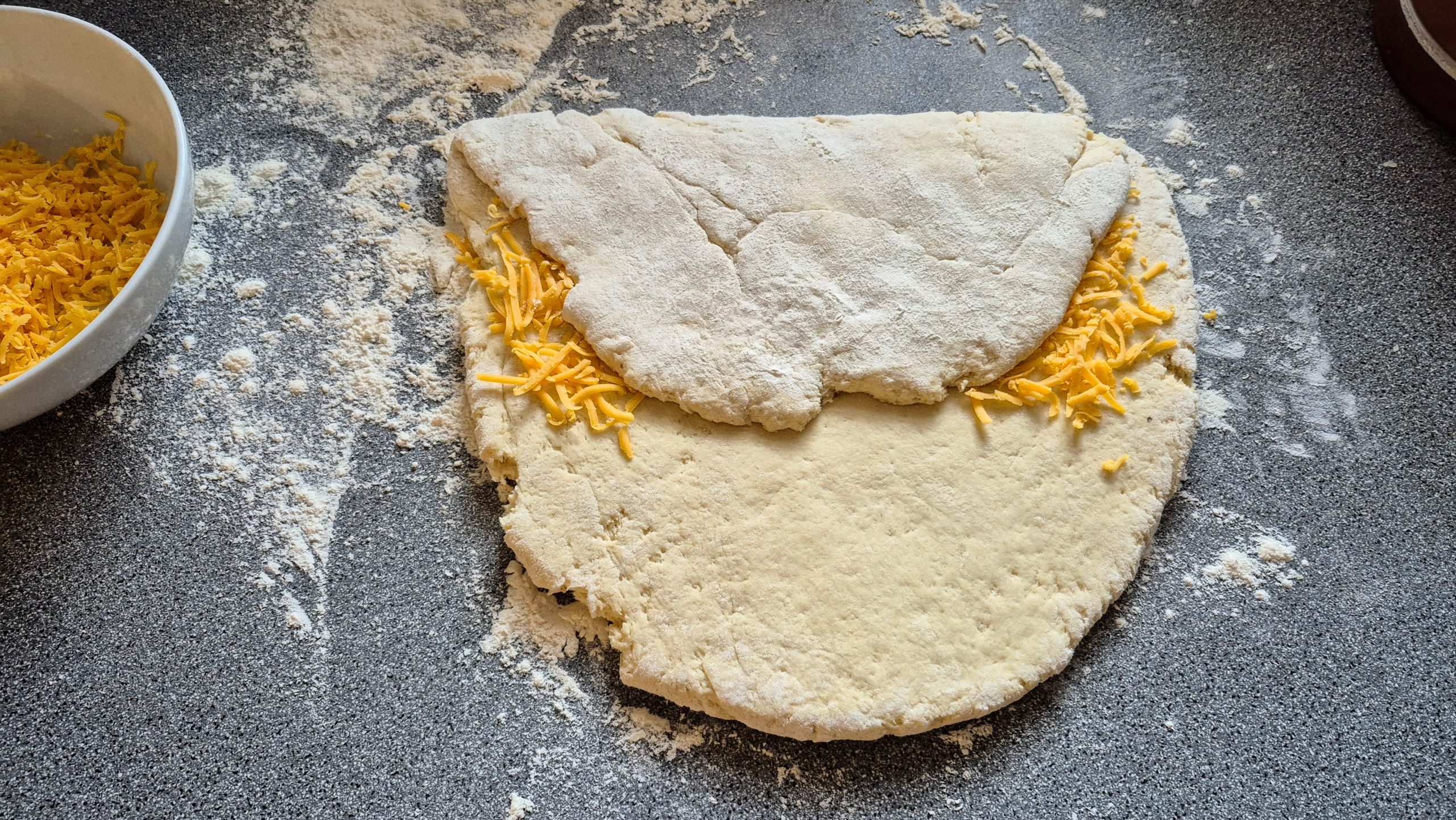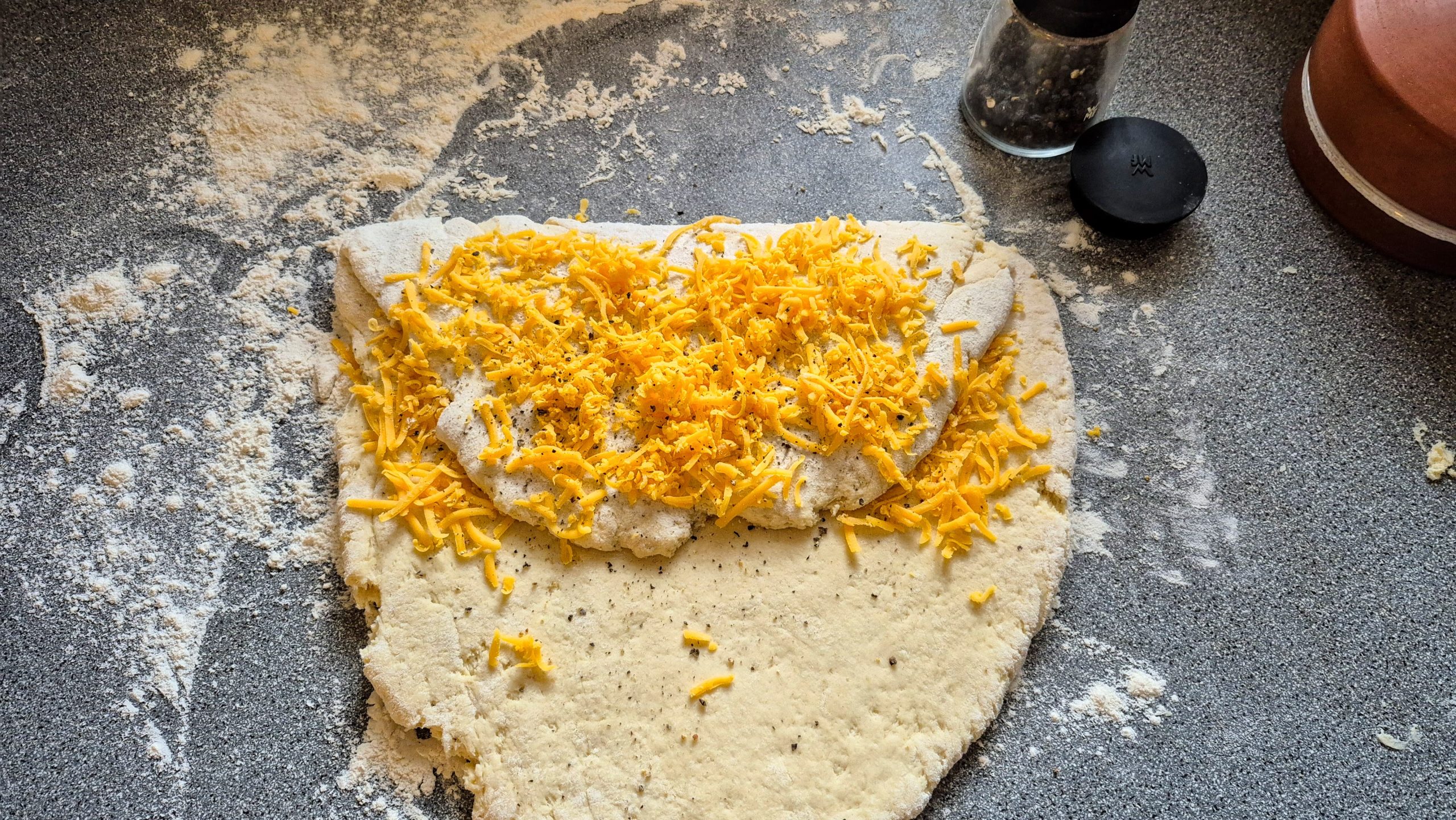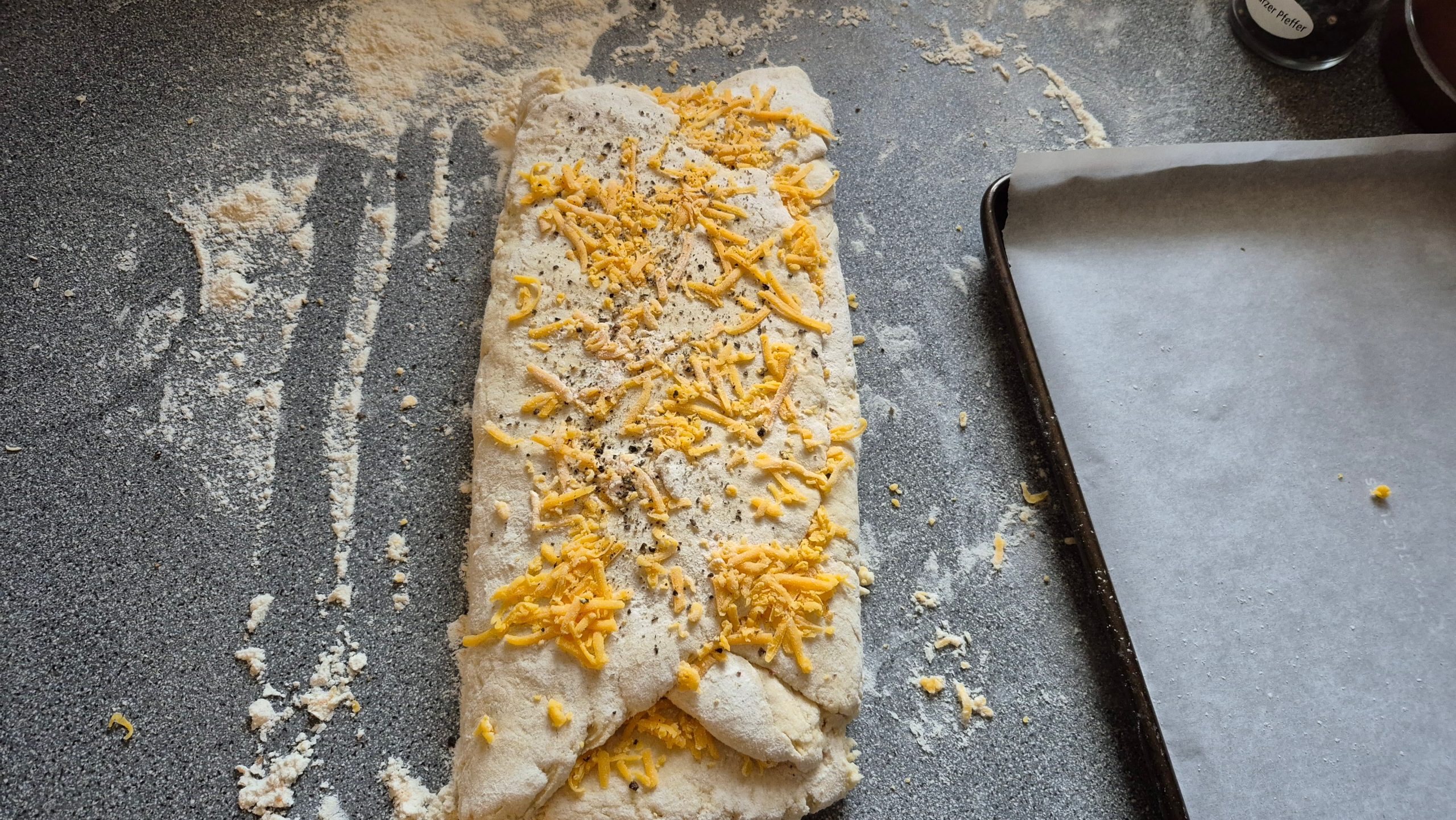This recipe was thrown together on November 8, 2025, around the time I discovered that it was in fact a Saturday, not a Sunday, and the brain scan I was preparing for “the next day” wasn’t until two days later. Its original form unfolded itself on a Bluesky thread, here.
Just a note about this: while you can produce a perfectly honest potato scone using instant mashed potatoes (if they’re good ones), or leftover fresh mashed potatoes, this recipe works best with newly cooked riced potatoes.
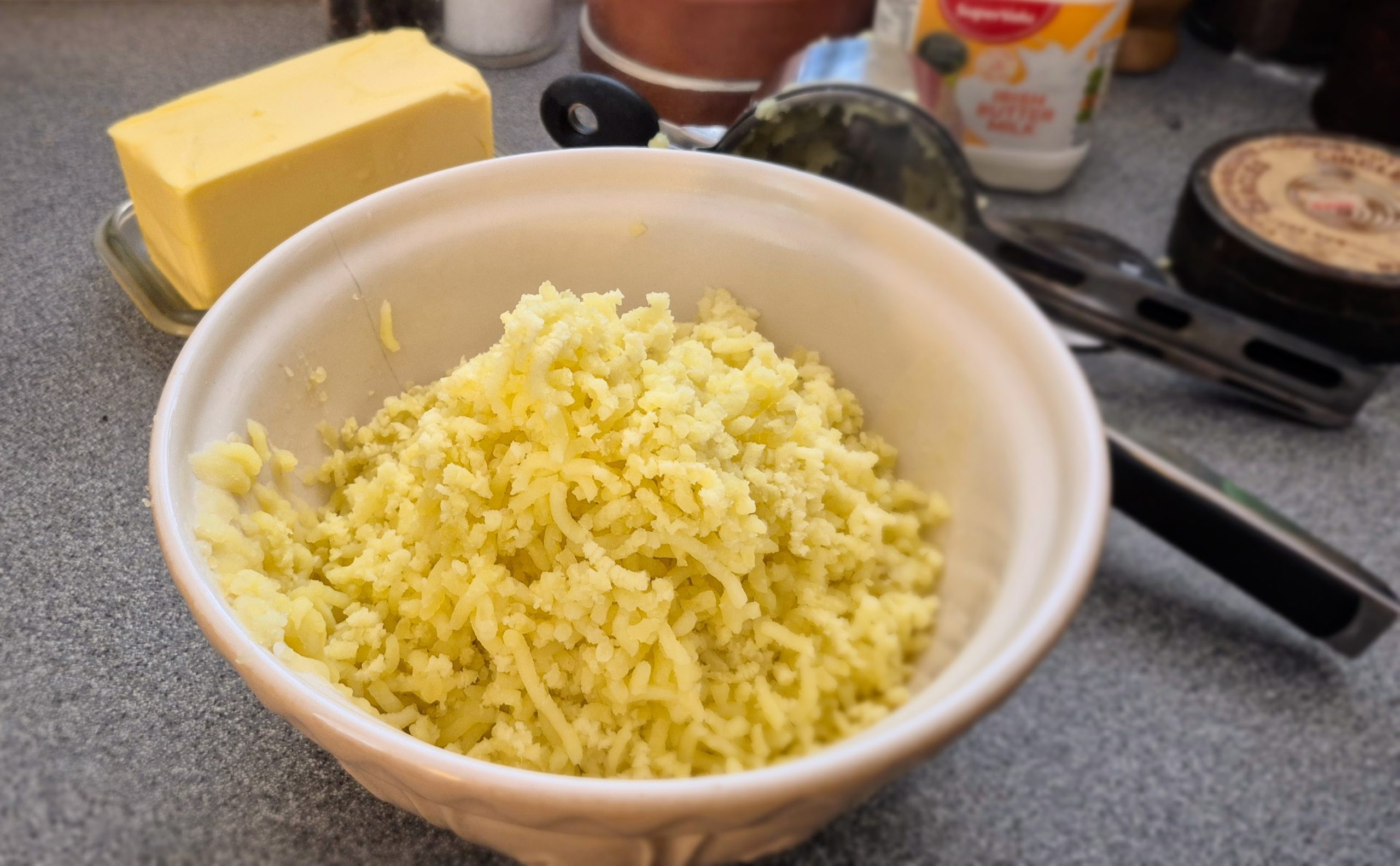
What cheese do you want to use? That’s dealer’s choice. Any cheese with good melting qualities will work well, once you’ve grated it. Peter always liked these with Parmesan (though frankly there weren’t many things he wouldn’t like with Parmesan on them). My preference is Cheddar, and I had some of a favored local one on hand at baking time, so that’s what I used.
Check the Recipe tab above for the ingredients and directions.
The ingredients:
- 380g all purpose flour (about 2.5c)
- 1 tablespoon baking powder
- 1/2 teaspoon baking soda
- 1/4 teaspoon salt (or you can omit this if you like)
- 80g / 6 tablespoons cold butter
- 240g / about 1 c cooled riced potatoes
- 240ml / 1c buttermilk (or whole milk soured with a couple of tablespoons of lemon juice or vinegar)
- Optional: 80g / approximately 1 cup of grated melting cheese (Cheddar, Parmesan, whatever you like)
- Optional (2): Cream for brushing the scones
What I did with the above:
(1) Threw into the Cuisinart/Magimix (with the steel blade in, not the plastic pastry blade) the flour, baking soda, baking powder, and just a little salt. Pulsed to mix.
(2) Added the butter and pulsed until the mixture was like fine breadcrumbs.
(3) Added the cooled riced potatoes. (Before you start this process you should toss them repeatedly with a fork so they cool down more quickly and don’t clump.)
(4) Pulsed them together with the dry ingredients and the butter until well mixed.
Then added the buttermilk. Pulsed the whole business just briefly until the mixture started to come together into a couple of big lumps. You have to be careful not to overdo this stage of the mixing, or you’ll wind up with hockey pucks.
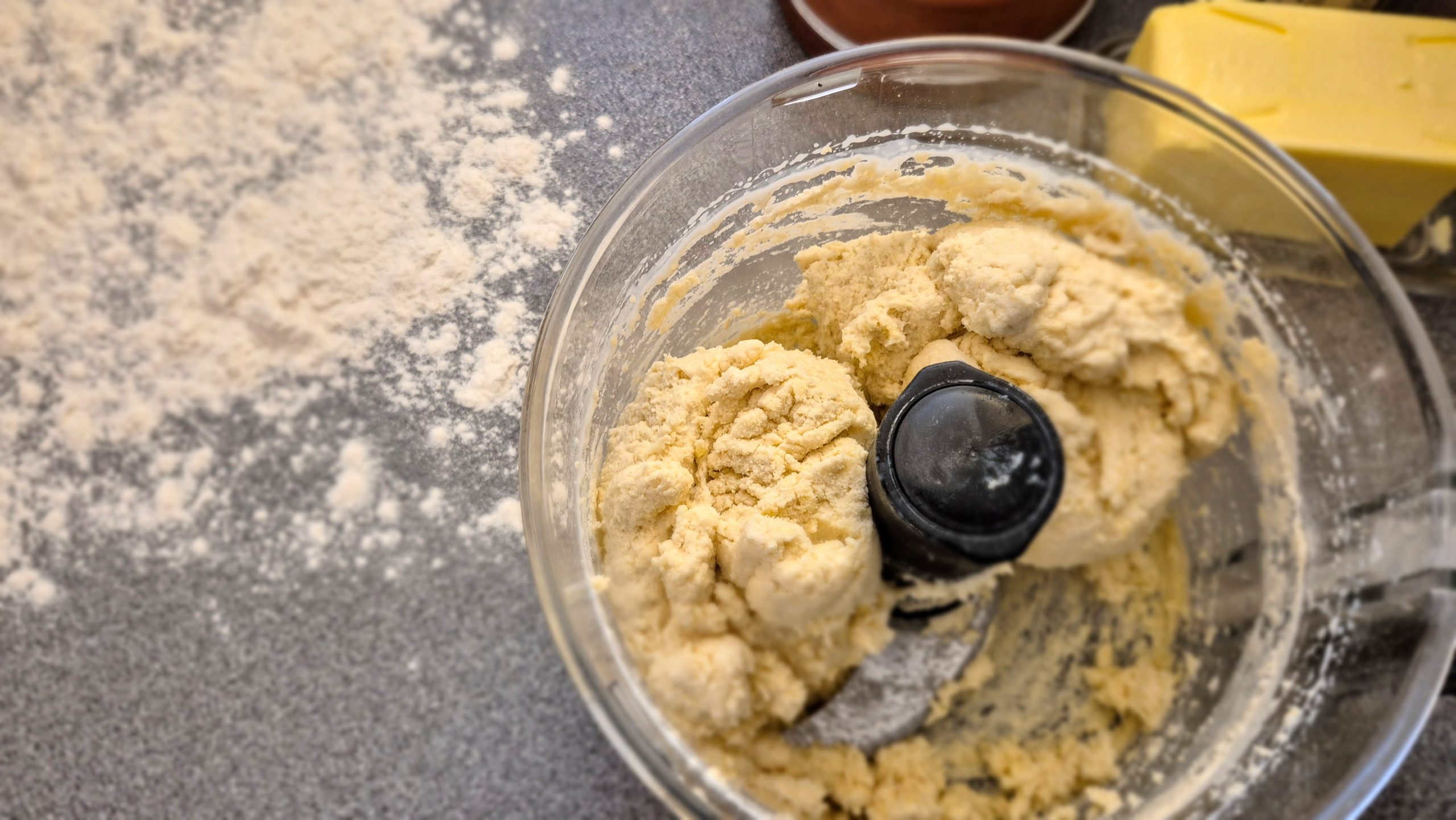
(6) Turned the mixed dough out on a liberally floured surface. Kneaded the dough just until it could be rounded up. (You don’t want to get overly energetic about compacting the dough. It’ll be soft and stickyish, but that’s fine.)
(7) Rolled it out gently, longer than it was wide, so that it wound up being about half an inch thick. Handled it as little and as lightly as possible during this process and the cutting that followed.
(8) You don’t have to add cheese to this scone recipe—it works brilliantly just plain. If you’ve got a Cheddar that you like, though, that works well here.
If doing the cheese thing, take about a third of the grated cheese and sprinkle it onto the middle of the rolled-out dough. (If not using cheese, just go along to the next step and follow the folding directions, ignoring the cheesy bit.)
Fold the top third gently over the middle.
Sprinkle another third of your grated cheese on top of the fold. Here you can also add a little seasoning, if you like. I ground some pepper on top of the cheese. (A dusting of cayenne pepper would work well too.)
…Now fold the bottom third up over the downfolded top third. (Here, if you like a shiny top on your scones, you could brush that final fold with cream. (I didn’t bother. It does help the cheese stick a little better, though.) If using cheese, sprinkle the rest of it on top. And maybe some more seasoning.
With all the cheese is in place, I pressed down gently with my hands on the whole piece of dough to encourage everything to hold together during the baking. (Do that *before* the cream and final cheese layer go on, if you’re doing those.) …Then start cutting.
…What size cutter to use? Dealer’s choice. The one in the image is 8cm: but I used 6cm ones (sort of hors d’oeuvre-size) to use up the rest of the dough.
…Cut everything out with an eye to getting as many whole scones out of the first cutting as you can. Then smoosh up the rest of the dough and cut it out.
Then I dug out a baking sheet and lined it with parchment paper. (Even though it was officially nonstick. Cheese does melt its way out of these while baking, and why make your cleanup more difficult?)
Turned the oven up to 220C/430F to preheat, and arranged the scones on the baking sheet, leaving room for them to spread a little.When the oven was ready, baked them for 15 minutes, until nicely browned. (I did a few of the small ones separately, on another smaller baking sheet, for 12 minutes.)
Then removed everybody to a rack and let them cool down for a while, while restraining myself severely from starting to immediately stuff them into my face. 🙂
Please note: because of the potato, these have superior keeping qualities… so put them in a tin or covered container after they’ve cooled. They’ll keep well for a few days. (Assuming the inhabitants of your living space haven’t already demolished them.)
You might also like these split with a slice of ham or turkey inside, and run under the grill/broiler with more cheese.
In any case: enjoy!


